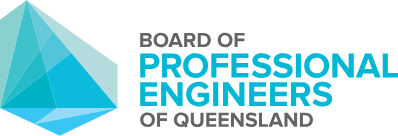12 Oct Continuing professional development critical during the time of Industry 4.0
A key to successfully navigating Industry 4.0 is through continuing professional development, only working within areas of competence and ensuring all changes are underpinned by good evidence based integrated risk assessment and management practices, writes the Board academic representative, Dr Maureen Hassall.
Over time the world has undergone a number of industrial revolutions. The first revolution came with the advent of steam driven mechanisation of industry. The second revolution came with the emergence of electrification of industry and the beginnings of mass transport with the inventions of the automobile and aeroplane. The third industrial revolution occurred with the advent of nuclear power and electronics, telecommunications and computing. Now we find ourselves on the dawn of the fourth industrial revolution which can be characterised by:
- advanced automation and robotics
- Industrial Internet of Things (IIoT) and increased interconnectedness across humans and machines
- advanced data analytics, machine learning and artificial intelligence
- use of cyber-physical systems e.g. through digital twins and virtual/augmented reality systems.

From Industry 4.0 will emerge both threats and opportunities to professional engineers and entities like BPEQ whose role is to:
- to protect the public by ensuring professional engineering services are provided by a registered professional engineer in a professional and competent way
- to maintain public confidence in the standard of services provided by registered professional engineers
- to uphold the standards of practice of registered professional engineers.
However, with Industry 4.0 these trends are occurring in a business context where sustaining leading-edge performance is becoming more challenging because of increasing risks and uncertainties which are being driven by the following:
- Faster rate of change which is making the future more difficult to predict and gives business less time to respond (Elahi 2010, Withers, Gupta et al. 2015).
- Increasing complexity of business processes, technologies and supply chains which increases the chance of hidden faults and unexpected outcomes (Elahi 2010, Marsh & McLennan 2015).
- Globalization which is increasing the interactions and interdependencies between businesses and means that risks and impacts from one region or business can quickly spread to others (Elahi 2010, Marsh & McLennan 2015, Withers, Gupta et al. 2015).
- Changing regulatory requirements (Aon 2014, Allianz 2015).
- Increasing cost competitiveness associated with import alternates and the corresponding loss of local suppliers and customers (Aon 2014, Mooney 2014, Allianz 2015).
- Increasing stakeholder expectations (Allianz 2015, Ernst & Young 2015).
‘… sustaining leading-edge performance is becoming more challenging because of increasing risks and uncertainties…’
A key to successfully navigating Industry 4.0 is through continuing professional development, only working within areas of competence and ensuring all changes are underpinned by good evidence based integrated risk assessment and management practices. Continuing professional development is of course an going requirement to be eligible for registration as RPEQ and should include technical and non technical learning (e.g. risk management). In terms of continuing professional development professional industry associations provide regular opportunities, but there are also many private operators. BPEQ too, following the success of the three pilot courses on risk and project management, is exploring the creation of a non-technical continuing professional development program for RPEQs in regional and remote Queensland.
References
- Allianz (2015). Allianz risk barometer: Top business risks 2015. Munich, Germany, Allianz and Allianz Global Corporate & Specialty SE.
- Aon (2014). Aon’s 2014 Australasian Risk Survey. Australia, Aon Corporation.
- Elahi, E. (2010). “How Risk Management Can Turn into Competitive Advantage.” College of Management Working Papers and Reports Paper 6.
- Ernst & Young (2015). Business risks facing mining and metals 2015-2016: Moving from the back seat to the driver’s seat. UK, Ernst & Young Global Limited.
- Marsh & McLennan (2015). Global risks 2015. Geneva, Switzerland, World Economic Forum.
- Mooney, S., Ed. (2014). Asia risk report: The top concerns for Asian risk managers – 2015 edition Australia. Sydney, Australia, Newsquest Specialist Media Ltd.
- Withers, G., N. Gupta, L. Curtis and N. Larkins (2015). Securing Austalia’s future: Australia’s comparative advantage. Melbourne, Australia, Australian Council of Learned Academies (ACOLA).
MAUREEN HASSALL
Academic representative
BEng, BSc(Psych), MBA, PhD, CEng, MAusIMM, MIChemE, RPEQ
Dr Hassall joined the Board in 2019 as the Academic representative. She is a chartered and registered Chemical Engineer and has a PhD in Cognitive Systems Engineering. Dr Hassall is an Associate Professor of Chemical Engineering and the director of UQ R!SK at the University of Queensland.

 MY ACCOUNT
MY ACCOUNT
